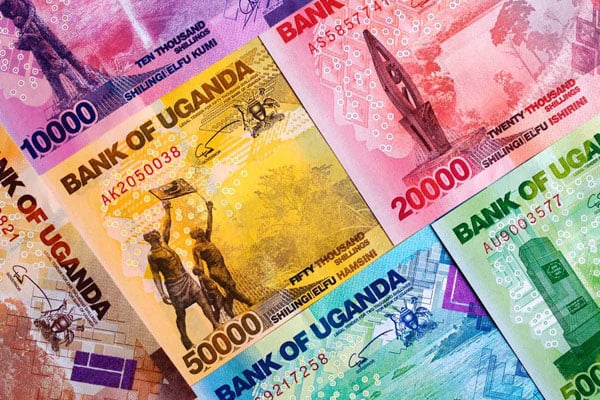Prime
Uganda’s foreign exchange reserve rises to Shs15 trillion

Uganda's legal tender. PHOTO/FILE
What you need to know:
- Prior, Uganda’s foreign exchange reserve up to June 2021 was at $3.567b.
The International Monetary Fund (IMF) has said Uganda’s foreign exchange reserve level now stands at $4.3b (Shs15.4trillion) following the disbursement of Special Drawing Rights (SDR).
This indicates a rise in the volume of Uganda’s foreign exchange reserve to cater for future imports of goods and services.
Prior, Uganda’s foreign exchange reserve up to June 2021 was at $3.567b.
Uganda, like many other countries, holds foreign exchange reserves to finance balance of payments needs, intervene in foreign exchange markets, and provide foreign exchange liquidity to domestic economic agents.
Other purposes are maintaining confidence in the domestic currency and facilitating foreign borrowing.
Besides other policy matters, the IMF works to help member countries have enough foreign exchange to conduct business with the rest of the world.
The IMF resident representative, Ms Izabela Karpowicz, said: “We project that, excluding oil-related financing and investment imports, reserves will remain at about 4 months of imports in the near term before rising to the East Africa Community target of 4.5 months of imports by 2025/26.”
Uganda imports more than it exports. As a result, Uganda’s wide current account deficit is increasingly financed by the portfolio inflows into government securities.
Ms Karpowicz said the current account deficit reached 10.2 percent of Gross Domestic Product (GDP) at end-June 2021 on account of a pick-up in imports and a faltering tourism recovery.
“The deficit was mainly financed by project and budget support loans but also increasingly by portfolio flows which doubled over the past year. Over the medium term, we expect the current account deficit to narrow gradually, supported by a recovery in external demand and private investment,” she said.
On economic diversification helping some sub-Saharan African countries to be resilient to economic shocks, Ms Karpowicz said non-resource intensive economies have generally scored better than others during Covid-19.
She said in Uganda, agriculture has dampened the negative effects on the economy of the Covid-19 related lockdowns by providing respite to part of the population that migrated temporarily back to the countryside.
Ms Karpowicz further pointed out that a favorable harvest and supportive commodity prices also helped exports.
Uganda is yet to begin oil production. In this regard, Ms Karpowicz said oil extraction will benefit growth for some time, but the country’s growth strategy will continue to hinge on multiple components, and particularly the development of the non-oil private sector via wide-ranging structural reforms.
“Going forward it will be important for Uganda to carefully balance spending on much needed developmental objectives (including health, education, and climate adaptation) against efforts to mobilise domestic revenues and maintain debt sustainability,” she said.
The commissioner for macroeconomic policy department Ministry of Finance, Planning and Economic Development, Albert A. Musisi, said IMF’s Special Drawing Rights allocation and debt Service Suspension Initiative (DSSI) are deemed to be part of the solution to the region’s public debt, but there are few limitations.
Mr Musisi said there are some limitations to the SDRs and DSSI of the IMF.
“Bigger percentage is allocated to more developed countries who have less need for it. The DSSI provides some budgetary space during a time of tight financing. However, seen as postponing the debt obligation and not debt relief,” he said.
The current account deficit means that the country is in a situation where it is importing more goods and services that it is exporting to the rest of the world.
In the State of Economy Report for September 2021 the Bank of Uganda said in the short term, the current account deficit is likely to deteriorate, as import performance is expected to remain strong, supported by increased government imports associated with public infrastructure projects.
“The strong import performance is, however, expected to be partially tempered by export growth, supported by global demand and strong rally of gold trade,” said the central bank.




